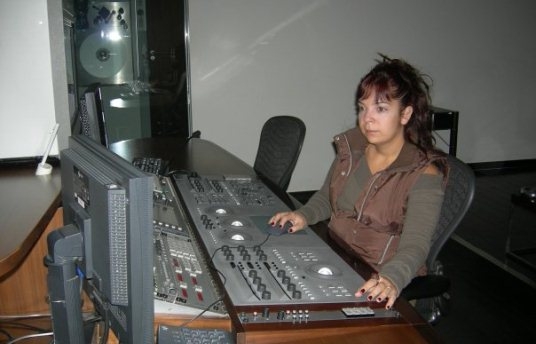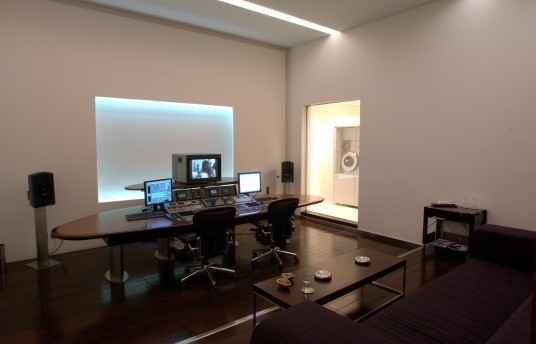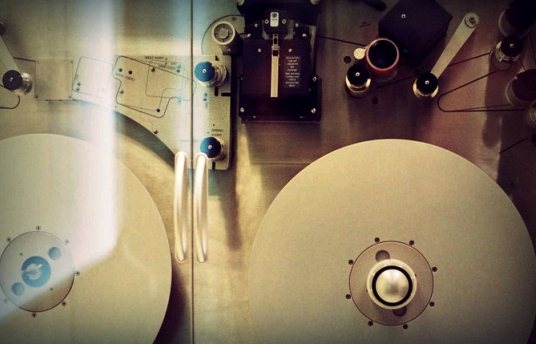People in Film: Dima Geagea
May 15, 2011

Dima Geagea was born in Beirut, Lebanon where she currently lives and works. She studied at the Lebanese American University (LAU), where she received a BA in Communication Arts / Radio, TV and Film. In 2002 she started her career in post-production as a Junior Colourist at The Gate, before moving to VTR Beirut as a Senior Colourist in 2005, where she was recently made Department Head.
DFI: You are a colourist, and your name is credited on the majority of Arab music videos. Many people are unaware of this very important role, so can you tell us what, exactly, your job entails?
Dima: Colour grading, or Telecine, is the first step of post-production after the actual shoot is done. A colourist is the person who works on the job either before or after the edit is done, depending on technical issues. There are 2 formats of rushes on which I work on: either 35 mm/16 mm or digital rushes. After the shoot, the negatives are sent to the laboratory for processing and development, then sent back to the Telecine, where I work on in the presence of the director and the director of photography (in case of a music video) and the agency (in the case of an ad). Telecine is the process of colour grading these rushes: matching the whole job to have a homogeneous colour tonality and then transferring these rushes onto digital tapes so the editor can start digitizing the rushes on his machine.

The Telecine suite, where Dima works with her clients.
A colourist is not simply an operator: on the contrary, he or she should have their own input concerning colours, tonalities, and the mood of the whole job. They should also have excellent technical knowledge so they can advise their clients on the best way to obtain a good result. The mood of each scene is set up with the clients, and then the job of the colourist is mainly to match all the shots, and every single take, to have the same colour grading. The colourist has a big range working on the image if the rushes are well shot and well lit. They can manipulate the contrast, the brightness, the colour tonality (warm, cold, de-saturated, and so forth) and can work on each colour separately (R, G ,B, Y, C, M) and control its hue, lumination and saturation. Telecine is pure magic on one condition: you need to have a good image to work on. In case of rushes shot digitally, I would only work on the edit since there is no need to use Telecine as the rushes are already on a digital format, so can be digitized easily.

The image of a machine called Spirit, where Dima puts the negatives (35 and 16 mm). This machine scans the images in real time (25 frames per second), and is connected to the colour corrector and the monitor, where she sees her footage real time.
DFI: How did you start this career? And what are the challenges you face in your job?
Dima: My main dream was to become a director of photography, but for many reasons I did not pursue this dream. When I was at university I met an excellent teacher with whom I started taking special courses about cinema and all its technicalities. I was so amazed by this magical world I started educating myself, trying to find out what the possibilities were of working in this field. I knew about Telecine so I applied at The Gate as a trainee, and eventually I was enrolled as an assistant. This field of post-production can never be taught in universities, mainly because it is impossible to get the machine due to the high cost of the equipment. I had to train for almost a year to understand how to manipulate it, and to understand the flow of work. I encountered many challenges at the beginning, especially with clients. It was not easy for them to accept me working on their jobs, especially as a bad Telecine can lead the main client to refuse his film! I had to really prove myself, to educate my eyes concerning colours, and be able to resolve any technical problem that I could face during a session in the presence of a client. It was not easy at all at the beginning; it was only when I proved to clients that I am a colourist and not an operator that things became easier and I started to really enjoy my job.

Dima Geagea
DFI: What do you think the main steps are, or the guides for, becoming a colourist in the Middle East?
Dima: Before listing the steps, it is essential to know that you don’t learn to become a colourist at universities. There are so many steps that a person should work on in order to develop this talent. The most important point is to understand the “palette” of colours and how to mix them together in order to give a specific mood in one frame. A colourist should constantly educate themselves by watching movies to learn the latest ways of colour correction, should update themselves when it comes to new inventions of machines and techniques. Another important step for a colourist to succeed in the industry, and especially in the Middle East, is to understand the industry of advertisement, and know exactly what specific colours should be used during a Telecine session for a specific product.
DFI: Does a colourist get involved in the pre-production?
Dima: It is not essential for a colourist to attend the pre-production meetings unless the director has a special vision concerning colours, or wants to have a special effect to give a specific mood, for example vintage, old, or black and white mood, etc.
DFI: What does cinema mean to you?
Dima: In a sentence I will tell you this: Cinema is like falling in love for the first time! Cinema is a magical world that needs a lot of respect and appreciation from the people who work in it. Cinema is my passion, and also my relief!
DFI: What is your favourite film and why? And if different, what is your favourite film in terms of colours, and why?
Dima: My favorite film is ‘Cinema Paradiso’, directed by Giuseppe Tornatore, because I simply see myself in this movie. It really translates into images the passion towards cinema that I have always felt, and always will. I have many, many favourite films when it comes to colour but if I need to say the first one that comes to mind, it would be ‘Delicatessen’, directed by Marc Caro and Jean Pierre Jeunet, because I simply love Darius Khondji, his artistic touch and his way of painting with light!
DFI: What is your favourite project, or the most exciting one you have worked on, and why?
Dima: Every job is a pure pleasure for me, but if I have to talk about my most exciting job, it would definitely be the first job I ever worked on in the presence of clients, an agency and a production house. This was 8 years ago and believe me, this project remains my favourite! I felt the huge responsibility on my shoulders, and I was working with passion and love in order to transmit what the clients wanted with colour.
DFI: How does a colourist’s job develop over the years?
Dima: The job of a colourist never stops developing. Each session and each job teaches the colourist new ways and techniques. Dealing with new directors, new directors of photography and new agencies is, by itself, a lesson that that you learn in each and every second. When a colourist knows their machine, there will be nothing new to learn about. On the artistic side… well, believe me, no matter how many years you keep on doing this job, you won’t be fully satisfied with your hunger for artistic knowledge.
DFI: If you were to give advice to young filmmakers, what would it be?
Dima: Love what you are doing, work with passion and respect this sacred art!